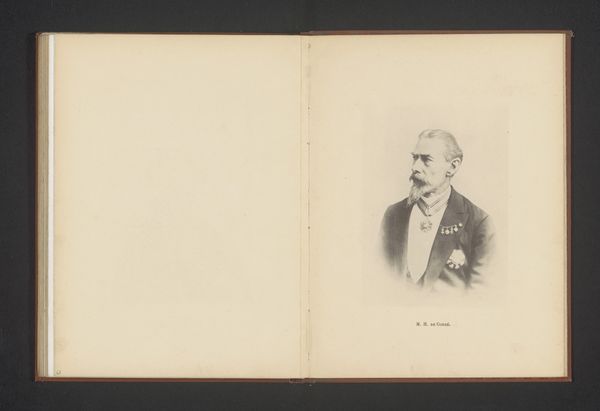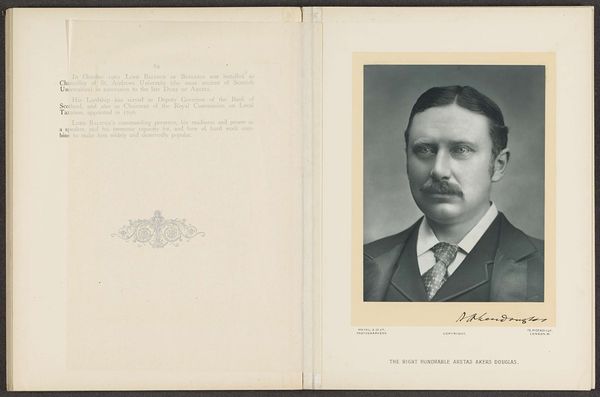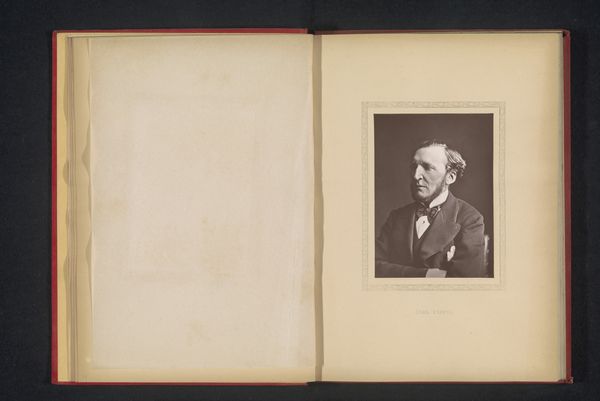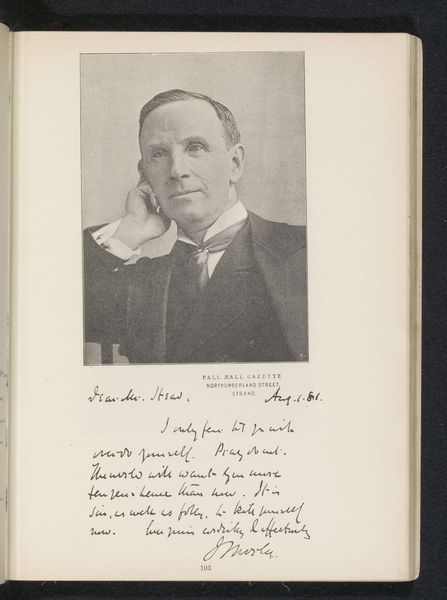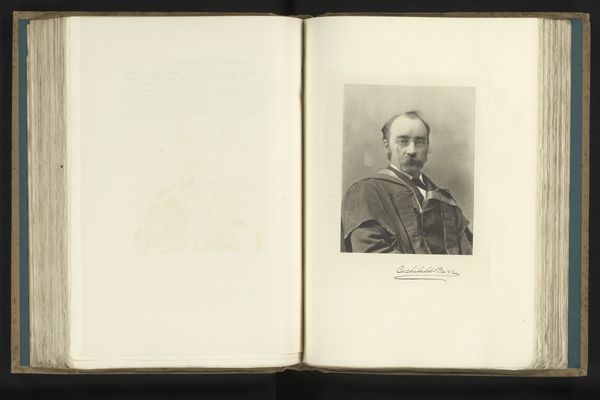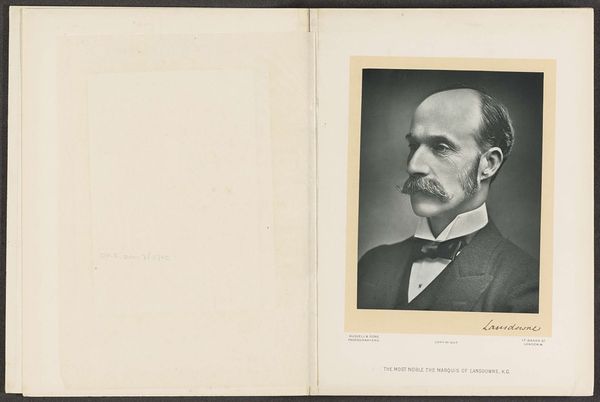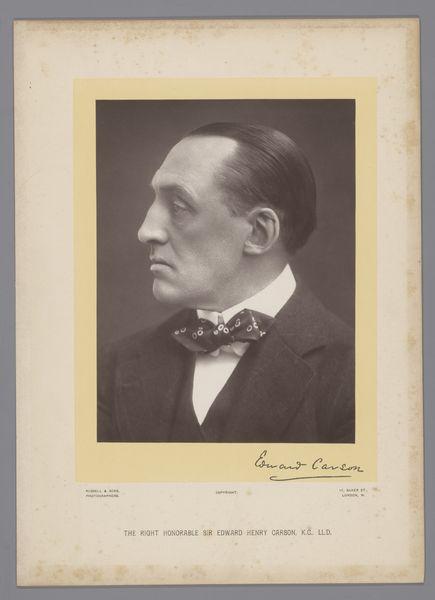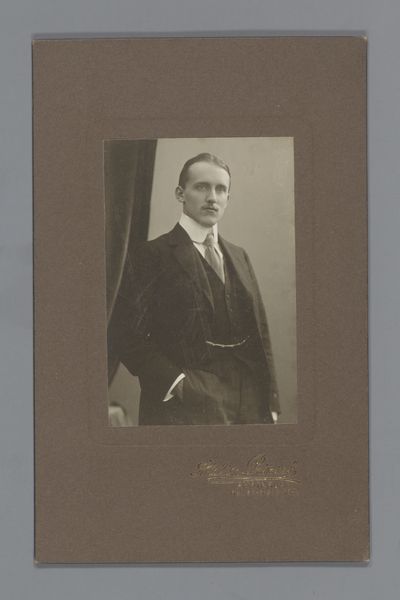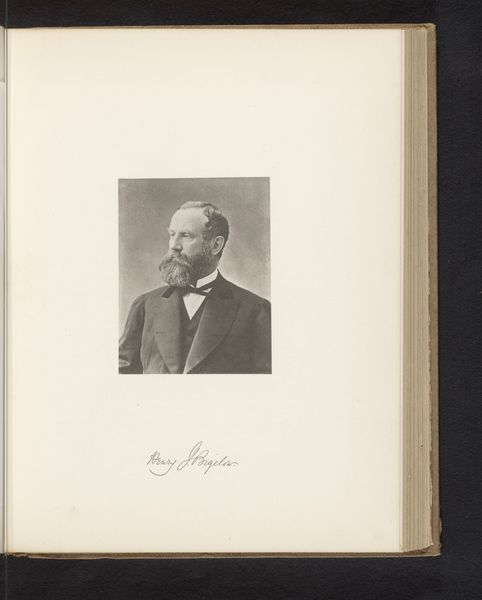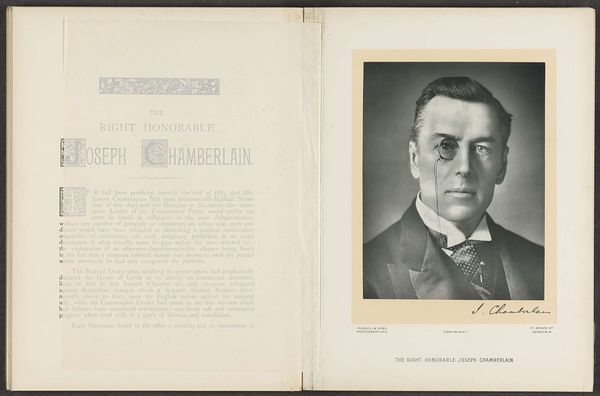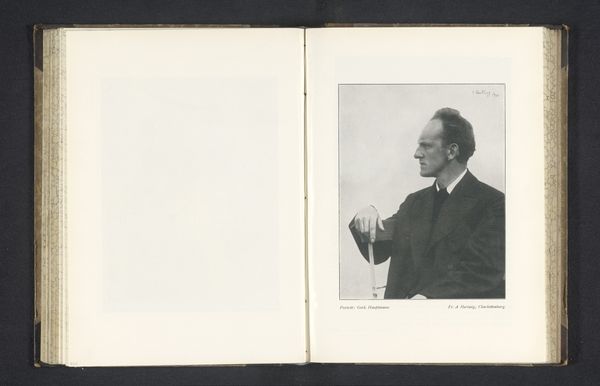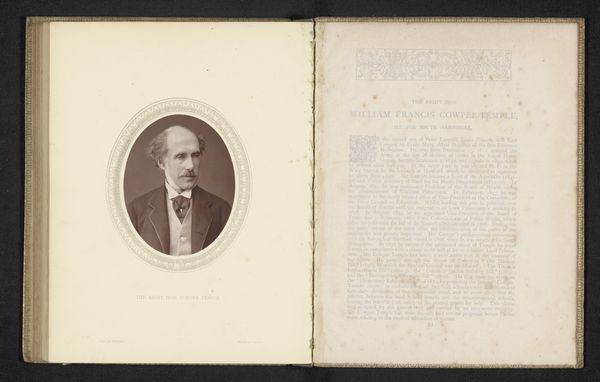
print, photography
#
portrait
# print
#
photography
Dimensions: height 227 mm, width 171 mm
Copyright: Rijks Museum: Open Domain
Curator: This is a photographic print of Lord Curzon of Kedleston, created sometime between 1893 and 1903 by Elliott & Fry. It’s a striking portrait, but how does it sit with you? Editor: It’s quite formal, almost imposing. I'm interested in what a portrait like this communicates about power and representation during the late 19th century. How do you interpret this work, especially considering the sitter's role in British imperial history? Curator: Exactly! Curzon was a key figure in the British Empire, particularly in India. A portrait like this isn't just about capturing his likeness, but it's also about constructing and reinforcing a certain image of authority and imperial power. Consider the context: photography was becoming more accessible, yet portraits of figures like Curzon were carefully controlled to project strength and legitimacy. Editor: So the portrait functions as a kind of propaganda, solidifying his position? The stiff posture and serious gaze definitely convey a sense of unwavering authority. Curator: Precisely. And it’s crucial to question whose perspectives are privileged and whose are marginalized in such representations. What’s absent here? Where are the voices and images of those subjected to British rule during Curzon's time? Editor: That makes me see the portrait differently. It's not just a picture of a man; it's a statement about the empire's values and how it wanted to be perceived, all while omitting the perspectives of the colonized. The lack of diversity is deafening. Curator: The image’s very stillness is a statement, as you observed. The apparatus of control at play. Editor: It’s sobering to realize how much these historical portraits actively shaped perceptions and reinforced unequal power structures. Thank you for pointing that out; I will look at portraits with new eyes! Curator: My pleasure. Remembering our work here, in our cultural institutions, is to reflect the biases of its creators.
Comments
No comments
Be the first to comment and join the conversation on the ultimate creative platform.

